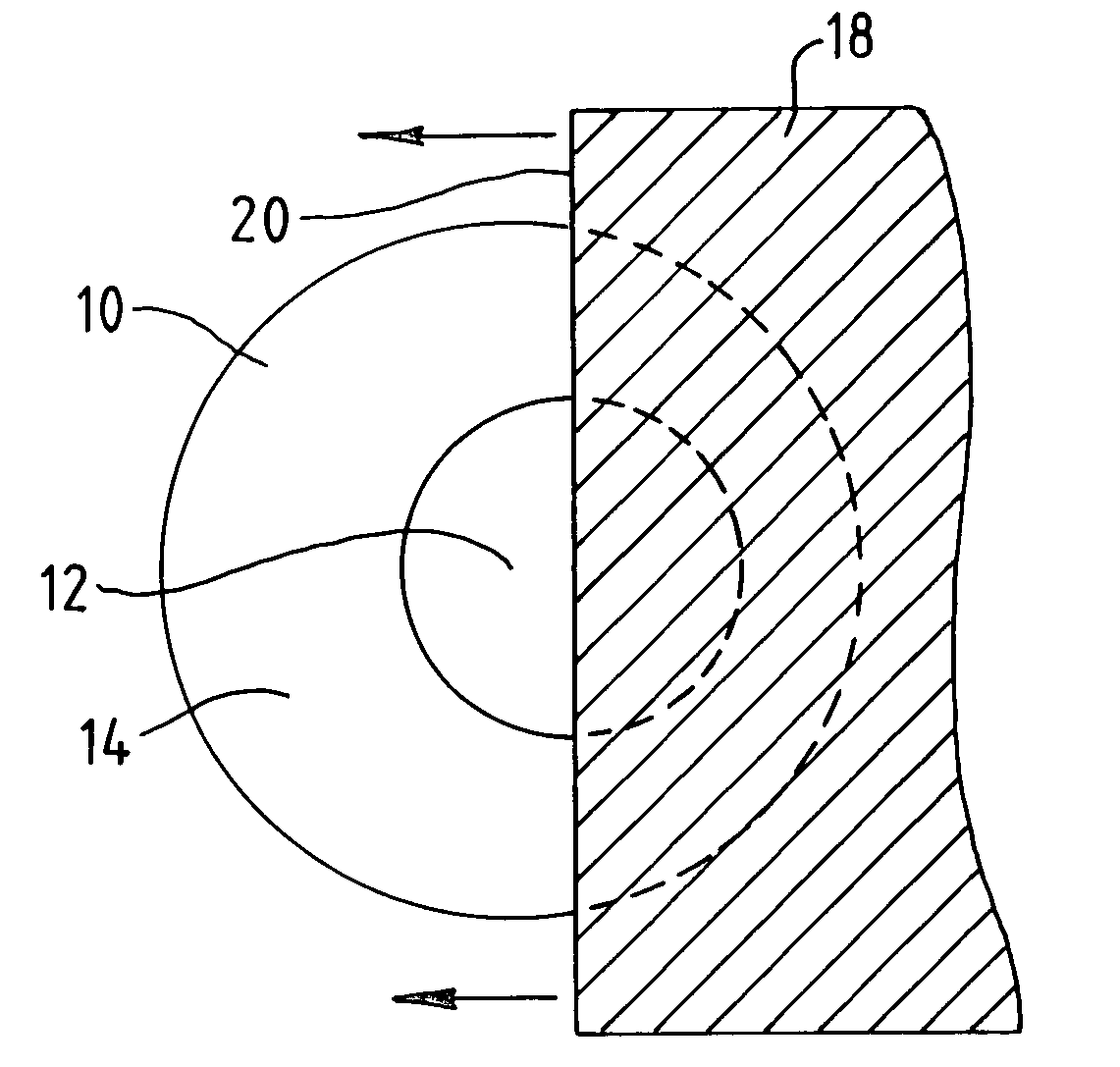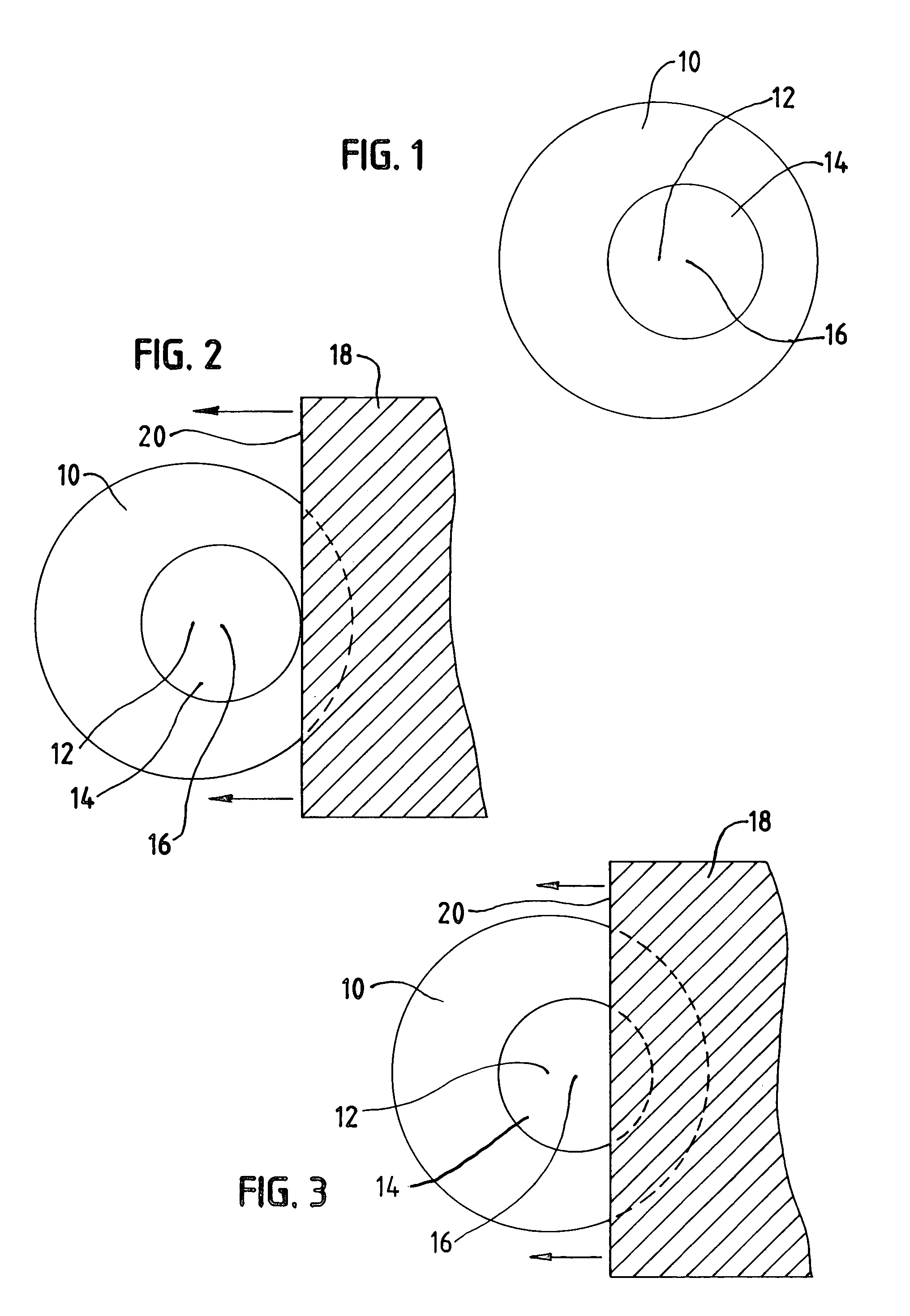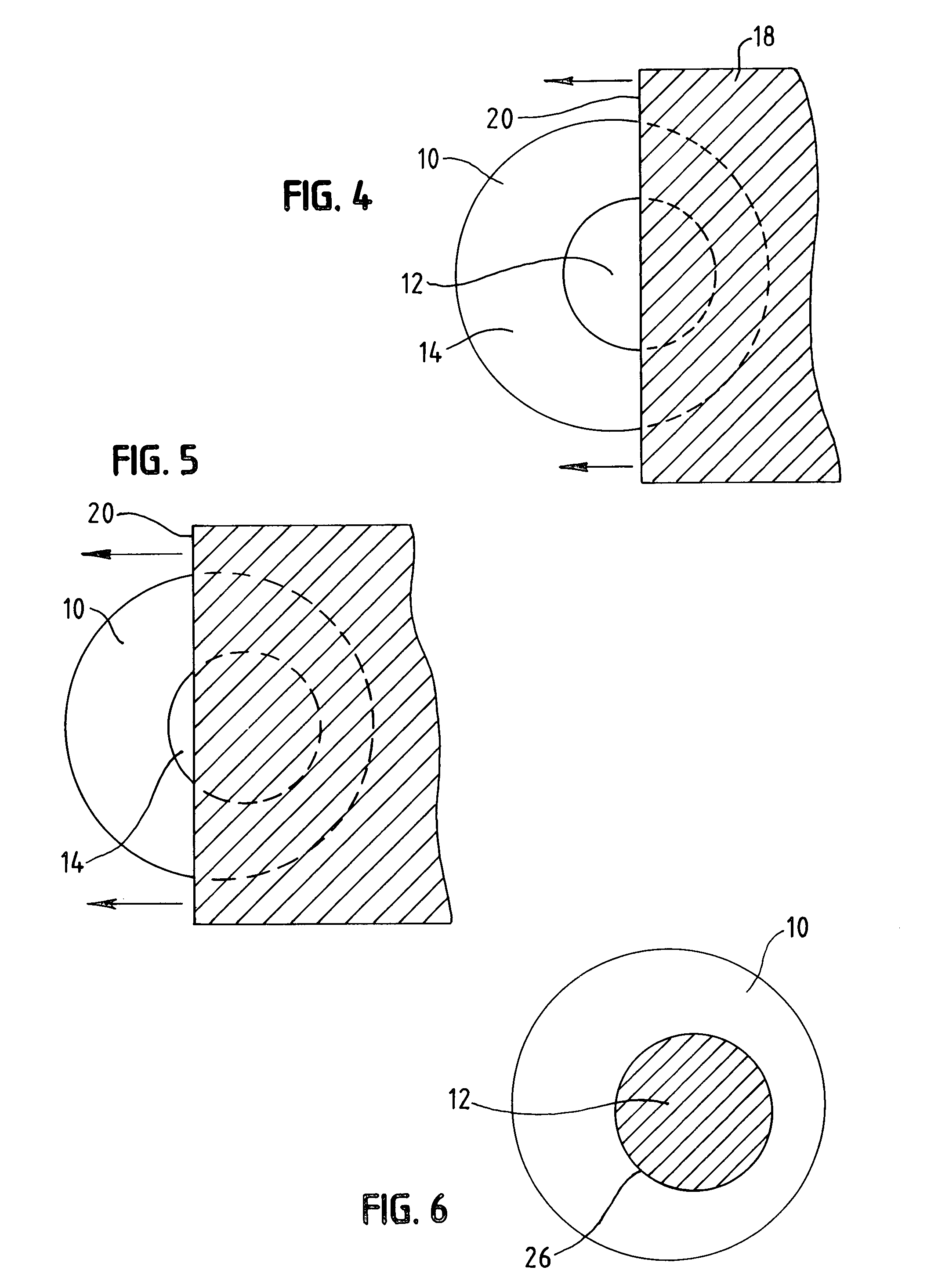Method and apparatus for correcting off-center laser ablations in refractive surgery
a laser ablation and refractive surgery technology, applied in laser surgery, medical science, surgery, etc., can solve the problems of difficult to produce second cuts to produce accurate optics, tissue associated with prolonged healing time, and inability to produce second cuts to achieve uniform optical correction
- Summary
- Abstract
- Description
- Claims
- Application Information
AI Technical Summary
Benefits of technology
Problems solved by technology
Method used
Image
Examples
example 2
[0058] In a highly myopic patient we might have a ten diopter myopic ablation placed 0.5 millimeters off the true optical center 12. The correcting laser ablation would have device 18 moving so that there are 20 pulses per millimeter being shot as the device moves across the area of the original (wrong) ablation zone to make the repair. For an ablation of 6.5 mm there would be a total of 130 pulses used in the correction of the maltreated region.
[0059]In another embodiment of the invention, as illustrated in FIG. 8, instead of using a moving laser masking device 18 during the first phase of the repairing ablation, a stationary laser masking device 28 is placed in front of the laser beam. In order for the energy of the laser to increase in a direction from the offset center 16 toward the correct center 12, laser masking device 28 has a laser energy penetrability that varies from less penetrable to more penetrable in a direction from the offset center 16 toward the correct center 12. ...
PUM
 Login to View More
Login to View More Abstract
Description
Claims
Application Information
 Login to View More
Login to View More - R&D
- Intellectual Property
- Life Sciences
- Materials
- Tech Scout
- Unparalleled Data Quality
- Higher Quality Content
- 60% Fewer Hallucinations
Browse by: Latest US Patents, China's latest patents, Technical Efficacy Thesaurus, Application Domain, Technology Topic, Popular Technical Reports.
© 2025 PatSnap. All rights reserved.Legal|Privacy policy|Modern Slavery Act Transparency Statement|Sitemap|About US| Contact US: help@patsnap.com



